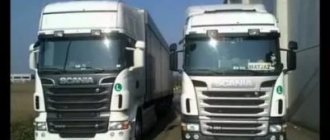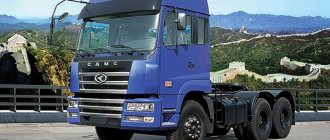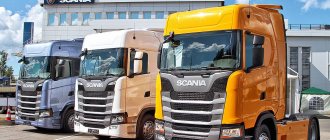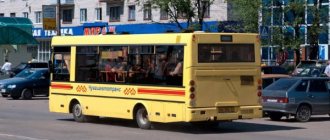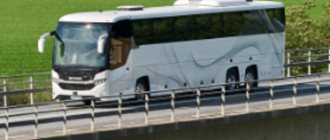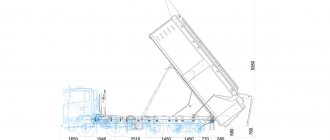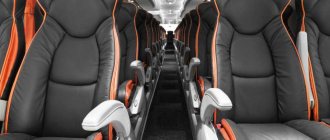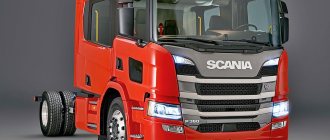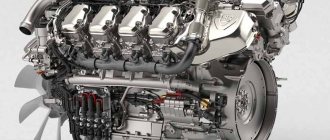Scania 113 is a Swedish tractor, one of the most common models among truck tractors in the Scania model range. During the years of production, the car was in high demand, and in the current period it is very generally recognized on the used market - due to its low cost and balanced characteristics. The presentation of the model took place in 1988 at the Auto Center in Geneva. The car received two modifications, which differ in wheel arrangement - 4x2 and 6x2. In the first case, the cardan is synchronized between the gearbox and the rear axle gearbox, and in the three-axle version, the cardan is also connected to the second and third axles. The approximate cost of the model is 11 thousand dollars.
How to reduce fuel consumption - 10 TIPS
We are talking about principles that excessively increase fuel consumption during operation.
- A dirty air filter impairs the performance of the air supplied to the engine. Naturally, this affects the parameters of the fuel mixture. Such a violation can significantly increase consumption and reduce power. Don't delay replacing the filter.
- A dirty oil filter similarly complicates the operation of the internal combustion engine.
- Insufficient tire pressure will require more fuel. The rolling gets worse. Check your tire pressure regularly.
- Warming up the engine before driving provides minor fuel savings.
- Low quality gasoline, we are talking not only about consumption, but also about additional harmful effects on individual engine components.
- Impaired wheel alignment and camber acts similarly to tires with insufficient pressure, and rolling resistance increases.
- Electric consumers influence fuel consumption. The air conditioner produces the highest consumption.
- Car load. Empty the trunk of “useful” and “necessary” things; at short intervals the difference will not be noticeable, but over the course of a year you will save a dozen or so liters.
- Keep the revs low according to the transmission capabilities
- Air resistance at high speeds; the higher the speed, the more the oncoming air masses hinder the movement of the car.
Eighth decade - conquest of America
In the early 1980s. Scania ranks second in the world in the production and export of bus chassis, second only to Daimler-Benz, with up to 90% of its production being exported. For example, during this period the German company G. Auwärter built 1000 Neoplan Jetliner buses on the Scania BR116 chassis. The eighties were notable for frequent and large-scale updates to the model range. In 1981, the production of front-engine chassis of the F and S series began, created on the basis of Scania 2nd generation trucks, but now they were assembled in Brazil, and almost all the products went to Latin American countries to the Camena body plants from Peru, Brazilian Nielson, Busscar , Comil, Siferal, Argentine Cametal. Chassis deliveries also began to Africa (Moroccan Jdidi and CIM, Egyptian El Nasr, Ghabbour, Kenyan Labh Singh), where they were fitted with simplified bodies, colloquially known as “Jungle Buses”.
In 1982, the Scania-Bussar production program was updated and now consisted of the N-series city bus chassis and the K-series intercity bus chassis. They were developed in collaboration with the Brazilian department and unified with the 2nd generation Scania trucks. In 1983, the Scania CR112 bus was renamed and was now produced as the CN112 model. A year later, its articulated modification CN112A appeared. In the same 1984, in the American state of Connecticut, the assembly of buses of the CN112 model for the US market was organized. The chassis and engines for the buses were imported from Sweden, and the bodies and their equipment were assembled from American components. In total, until 1988, about 250 cars of this model were assembled in the USA. In 1988, production of bus chassis and buses unified with 3rd generation trucks began. These included the chassis for city buses of the N113 series, the chassis for city and suburban buses L113 and the chassis for intercity and tourist vehicles of the K113 series. All of them were offered in two- and three-axle versions, and the N series also included the articulated model N113A. This entire model range was produced until 1996, and in Brazil, the K113 series chassis remained on the assembly line until 1998. The only city bus in the production program was the Scania CN113 (1988–1993).
In 1990, 50% of all Scania bus chassis were sold in South America, Europe excluding Scandinavian countries accounted for 23%, and only 8% of vehicles produced remained in Sweden.
Scania 113 real fuel consumption per 100 km: reviews
- David, Ussuriysk. I have a Scania M123, this bench serves me well. I bought the car in 2012, the tractor itself was 1993. At the time of purchase, the car was not running. I bought it in a half-looted state, or rather a completely destroyed car. The previous owner said that in the 1990s his garage was looted and some parts from the truck were taken. I purchased it for restoration. The technical condition is acceptable, the power unit starts immediately - after 23 years in the garage. At the time of purchase, only the right wheel was installed at the front, and the doors did not close. The locks were also dismantled. In short, after a thorough inspection, I made a list of spare parts that need to be purchased - these are wheels, gas tank brackets, hood cover, bumper, radiator, cab lift pump, cab lift rod, rear drums, change the oil, update the power steering fluid, install a power steering pump , paint the cabin, and install a chandelier with fog lights. The thieves took all these consumables and parts, but after all, I got the tractor at a big discount. By the time this review was written, I had restored everything, the car was in full swing. The power unit is impressive and torquey, when loaded it consumes 35 liters, without load (with an empty trailer) it manages to fit 27 liters/100 km.
- Evgeniy, Ilyinogorsk. I drive a Scania 113 manufactured in 1994. Over three years of active use, the machine showed all its advantages, but it was not without its shortcomings. In the end, I liked the car - it is ordinary and solid, but already outdated. I think it will serve conscientiously for another three years. Of course, the tractor often breaks down and suffers from factory jambs; its travel distance is 1.2 million kilometers. Consumables and parts are quite budget-friendly, the maximum level of fuel consumption is around 32 liters per 100 km - this is when loaded, and without a load it is possible to fit even 27 liters of diesel fuel. There are no electronics at all, maybe this is optimal - it is believed that there should be fewer malfunctions, but they still appear. There was no major renovation at all. As a result, I will give this tractor a rating of 4 for survivability and budget service. I bought this car for 600 thousand rubles in decent condition. The zero option will cost 4-5 million (I'm talking about more current models that are currently being produced). Maximum power is enough. I was glad that the engine is unpretentious to the quality of diesel fuel. The car is stable, holds the road adequately, and does not react to ruts at all. There is plenty of space inside and the stove functions well.
- Timur, Tambov. I've been driving a Scania 113 since 2000. The car was manufactured in 1994. The current distance traveled is 780 thousand kilometers. Among the main advantages of the car, it is possible to highlight the possibility of repair, availability of spare parts, survivability and low cost of the tractor itself. The car is worth every ruble invested; it is a strong workhorse for the unpretentious worker. A smart tractor for any purpose, it is interpreted as a good source of income. The safety margin is colossal. I guess I’ll ride this “bucket” until now the body won’t completely rot. After all, I see that the chassis and power unit are working normally and withstand absolutely all tests. The tractor drives excellently on our roads, the chassis is soft and energy-intensive. Steering control is also good, as is mobility. The cabin is warm and cozy in winter; in summer it is possible to turn on the air conditioning - it is also impressive, but noisy. The engine's maximum power is sufficient to spare; it consumes up to 35 liters when loaded, and without a trailer the tractor consumes 25-26 l/100 km.
- Ilya, Kalmykia. My Scania 113 tractor did not let me down at all on a long journey. Even though it is old, it is endowed with a margin of safety that would be the envy of more current models. I have a tractor manufactured in 1993, equipped with a manual transmission and a powerful diesel engine, which, with a capacity of 12 liters, develops 360 horsepower. By current standards, this is an average figure; there is enough torque with a reserve. I was pleased with the efficiency - the maximum consumption is 35 liters. for a hundred kilometers. within the city limits, loaded. On the highway it consumes 1-2 liters less. Without a trailer, diesel fuel consumption does not exceed 27 liters. The interior is not the most spacious, but it is more profitable than that of KAMAZ. There is one small sleeping place. The car is perfectly adapted to domestic conditions of active use, I mean energy-intensive chassis and smooth movement.
- Victor, Yakutsk. I ride a Scania 113 1993. The car was provided to me at work. The transport company didn’t have any other cars available, so they gave me this old guy. Well, at least that’s something, thanks for that – I didn’t have my own truck. I have been riding it since 2014, performing regional transportation. The truck copes with the assigned tasks with high quality, regardless of the age of the model. The current distance traveled is 700 thousand kilometers. I hope that the car will still last for 300 thousand km, it hasn’t come to a major overhaul yet, which is good. The power unit is diesel, rated at 360 horsepower, and operates with a manual transmission. The gearbox operates intermittently, the engine reserve is not 100% exposed. Inside there is noise, vibration and other shortcomings characteristic of an older car with such a respectable mileage. The seating position is comfortable, all controls are at hand. Only the dashboard fades in the sun and is not very readable. The seat is too soft, you feel like you're sinking into it. After a long ride, your back becomes stiff, you have to get out of the cabin and walk around to some extent, stretch your limbs, so to speak. The quality of materials leaves much to be desired, the front panel constantly creaks. You can come to terms with all the disadvantages if you remember how much you need a salary. The car is equipped with 360 hp. a power unit that consumes 30-35 liters depending on the load, and with an empty trailer the Scania 113 consumes no more than a voracious all-wheel drive vehicle like the Chevrolet Tahoe - about 27 liters per hundred kilometers. This is the norm for such a car. The whole body was rotten and had to be repainted. I replaced the wheels and installed lower profile tires to improve stability and steering feedback. Convenience has decreased to some extent, but after all, the car began to lean less in turns.
Sixth decade - change of brand
An important component of the production program continued to be bus chassis types B and BF, which were the successors to the vehicles of previous years. During this period, they were exported to approximately 100 countries around the world, where they were equipped with bodies from various local manufacturers. By the end of the 1960s, sales of front-engine buses in continental Europe had fallen sharply, but they were still in demand in third world countries. Another direction was the production of completely self-made buses of the CF and CR series (as rear-engine vehicles were now designated). But compared to the chassis, their production was limited. Scania-Vabis considered ensuring passenger comfort and environmental protection as its main focus in this area. Thus, in 1966, the production of the CR76 city bus began with a rear-engine layout, characterized by a low floor location and an engine with reduced exhaust levels.
In October 1966, Scania-Vabis acquired the plant of the bodybuilding company Svenska Karosseri Verkstäderna (SKV), located in Katrineholm, where in 1967 it transferred the assembly of CR76 buses from Södertälje, and in 1968 - bus chassis, after which production buses and chassis was allocated to the Scania-Bussar AB division.
On September 3, 1967, the so-called “R-day” came in Sweden, when the transition to right-hand traffic occurred. The decision to travel the same way as in continental Europe was made back in May 1963, and preparations were thoroughly made for the transition. At the beginning of 1967, buses with right-hand drive doors had already begun to be produced “in reserve”, and the production of left-hand drive vehicles was practically curtailed. After the introduction of right-hand traffic, a massive replacement of buses began, for which carriers were given preferential loans and partially subsidized. At the same time, on the still strong buses of previous years, the doors were moved to the other side using a makeshift method, but they were not used for long.
In 1968, the Scania-Vabis brand was renamed Scania. At the same time, in connection with the start of production of the so-called “zero series” trucks, rear-engine BR110M chassis (1968–1973) began to be produced, and buses of the CR76 model were designated CR110M.
In 1969, Scania-Vabis merged with Saab, resulting in the creation of the Saab-Scania AB concern. In the same year, the development of the specific British market began. The BR110M chassis began to be supplied to Foggy Albion, on which the bodybuilding company Metro Cammell Weymann (MCW) mounted the bodies of city buses. The finished product was named Metro-Scania.
Tenth decade – international assembly
The first years of the new century were marked by a radical reorganization of bus production. In 2001, the assembly of OmniLink city buses began at a joint venture in the Polish city of Slupsk, and the following year it became a branch of Scania Production Sl/upsk SA. In 2002, with the opening of (Scania-Peter) on the territory of a/k No. 1109, the assembly of OmniLink buses began in St. Petersburg. In the same year, the bus production department was renamed Omni Katrineholm AB, and two years later bus production in Katrineholm was completed. Now the buses were assembled in Russia and Poland, and the bus chassis in Södertälje.
In autumn 2003, the Scania Irizar PB tourist bus was awarded the title "Bus of the Year 2004".
In 2004, the Brazilian branch began assembling a new generation of front-engine F series chassis with 5-cylinder 9 liter engines. In 2005, the range of buses was modernized. Now, instead of the previous indices, which encoded the engine displacement and the serial number of the generation, the buses received designations that indicated the engine power. In the same year, for the British market, Scania began producing a double-decker version of the OmniCity city bus with a height of 4.21 m. The assembly of these vehicles was organized in Poland. In 2007, intercity buses of the OmniLine series were replaced by the new generation OmniExpress vehicles with 4x2 and 6x2 wheel arrangements. In 2010, together with the Chinese bodybuilding company Higer, the assembly of Scania Touring buses began.
